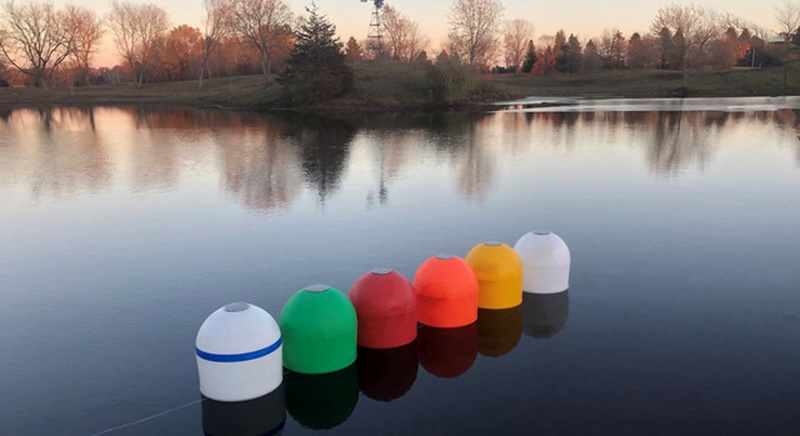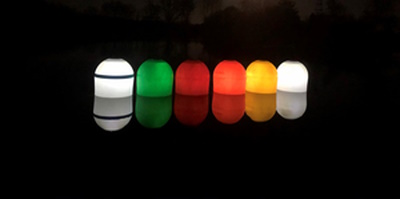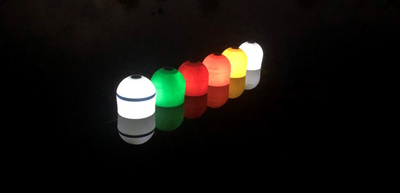A History Of Buoys
Posted by Dunn Rite on Feb 12th 2021
Buoys are essential navigational aids in oceans, lakes, and rivers. We’re proud to offer the latest in buoy innovation, the durable Aqua Lantern: a solar-powered light-up buoy that represents quite the advance in buoy technology. To set this safety product in context, let’s dig into the backstory of buoys a bit!
The History of Buoys
Although the first recorded mention of buoys dates from the end of the 13th century, there’s no question these markers were in use well before that; we just don’t have solid documentation in one form or another.
The 1295 La Compasso de Navigare, a mariner’s handbook detailing sea roads and approaches around the Iberian Peninsula, notes the use of buoys in Spain’s Guadalquivir River to direct vessels accessing Sevilla. A few decades later, we can find historical literature detailing the use of buoys in the Zuider Zee, a bay of the North Sea, routing ships to Amsterdam and other ports.
Pieces of Rafts or Wood
Very early buoys were likely simply pieces of rafts or wood secured to a hefty stone. By the 14th century, hollow wooden casks chained to stones were in use in the Netherlands and Germany; these “tonnen”-style cask buoys were soon employed in England. In 1514, acknowledging a petition by the Guild of Shipmen and Mariners, King Henry VIII created Trinity House by royal charter to manage navigational aids in English waters.
According to the U.S. Lighthouse Society, the close of the 1500s saw more than 40 buoys placed in the Zuider Zee, close to 30 in North Germany’s rivers, and some 17 in England.
Seetonnen Buoy
Dutch and German technology later replaced the cask buoy with a more advanced model: the vertical “Seetonnen” buoy made of tapered wood.
In England’s American colonies, early buoys were mainly of the cask or the spar variety, the latter being a timber pole—often made from juniper or arborvitae—driven into the riverbed or bay floor. The U.S. Coast Guard Historian’s Office notes that documentation from that era on buoys is scanty. However, cask buoys were mentioned in the Delaware River in the 1760s and spar buoys in Boston Harbor by 1780.
19th Century
Through the first half of the 19th century, the use of buoys wasn’t standardized in the U.S., which made for a confusing and often sub-par hodgepodge network of navigational aids. Many early American buoys were too small to be effectively seen and posed their own navigational hazard; designs and colors were all over the place, and buoys were often poorly sited and maintained.
Late 1840s & Early 1850s
This began to change in the late 1840s and early 1850s, when the Lateral System—with red “nun” buoys placed to the starboard side of mariners coming into harbor and black “can” buoys to the port side—was adopted, apparently (according to the U.S. Lighthouse Society) based on the setup used in the Port of Liverpool, heavily visited by American ships. This “right, red, return” system is still the standard, though can buoys these days are painted green instead of black for greater long-range visibility.
Congress established the Lighthouse Board in 1852, which helped further standardize the nation’s buoyage systems—and inspired an explosion of technological refinement.
Beyond Buoys as Mere Daymarks
Early buoys were simply daymarks, providing a navigational service only during the daylight hours when they could be picked out by eye. In the 19th century, experiments with other ways of broadcasting a buoy’s location were extensively underway.
By the mid-1800s, bell buoys that clanged as the objects moved in swells and waves were being developed. A significant innovation was John Courtenay’s “whistle buoy,” patented in 1876. Open at the submerged bottom end, Courtenay’s buoy had a hollow tube inside rising to a whistle; the buoy’s movement forced air up the tube and produced the whistling signal.
Audible Buoys
At about the same time that inventors were tinkering with the concept of audible buoys, others were experimenting with ways to light buoys so they could be visible at night. These included buoys fired using compressed gas and electrically powered versions, such as the lantern-hung spar buoys powered by a cable in New York harbor’s Gedney’s Channel in 1888.
As the 20th century unfolded, the U.S. Lighthouse Board was replaced with the Lighthouse Service, which—under the direction of its first commissioner, George Putnam—innovated a slew of new buoy designs and technologies. These included the use of radio beacons that made buoys detectable from dozens of miles away, far beyond the range of sight and sound.
U.S. Coast Guard
In 1939, the Lighthouse Service was rolled into the U.S. Coast Guard. This was about when the League of Nations discussed adopting a unified international standard of buoy markings. World War II interrupted that effort, but 50 countries adopted such a protocol—the Maritime Buoyage System-in 1980, with the International Association of Lighthouse Authorities overseeing.
Modern Solar Buoys
One of the breakthroughs of modern buoys is the use of solar power to light them: the design behind our fabulous solar light up buoys, the Aqua Lantern. These large solar light up buoys, which come in a variety of colors, are powered by a rechargeable solar light engine that illuminates five blazing LED lights at night—just the ticket for squaring off your swimming area or displaying the location of your pier, dock, inflatable swim platform or trampoline. Our Aqua Lanterns’ bell-shaped design keeps them afloat even in choppy waters, and their LED glow makes them visible for up to a half nautical mile away!
Almost all of the following info, by the way, comes from two excellent references we encourage you to check out if you find yourself hooked on buoy history after reading this: the U.S. Lighthouse Society and the U.S. Coast Guard Historian’s Office.
Dunn-Rite Pool Products & Pool Accessories
3rd Generation Family Owned Company with a long history of developing innovative products of the highest quality.
Pool Fountains - Combo Units - Pool Volleyball - Pool Basketball





